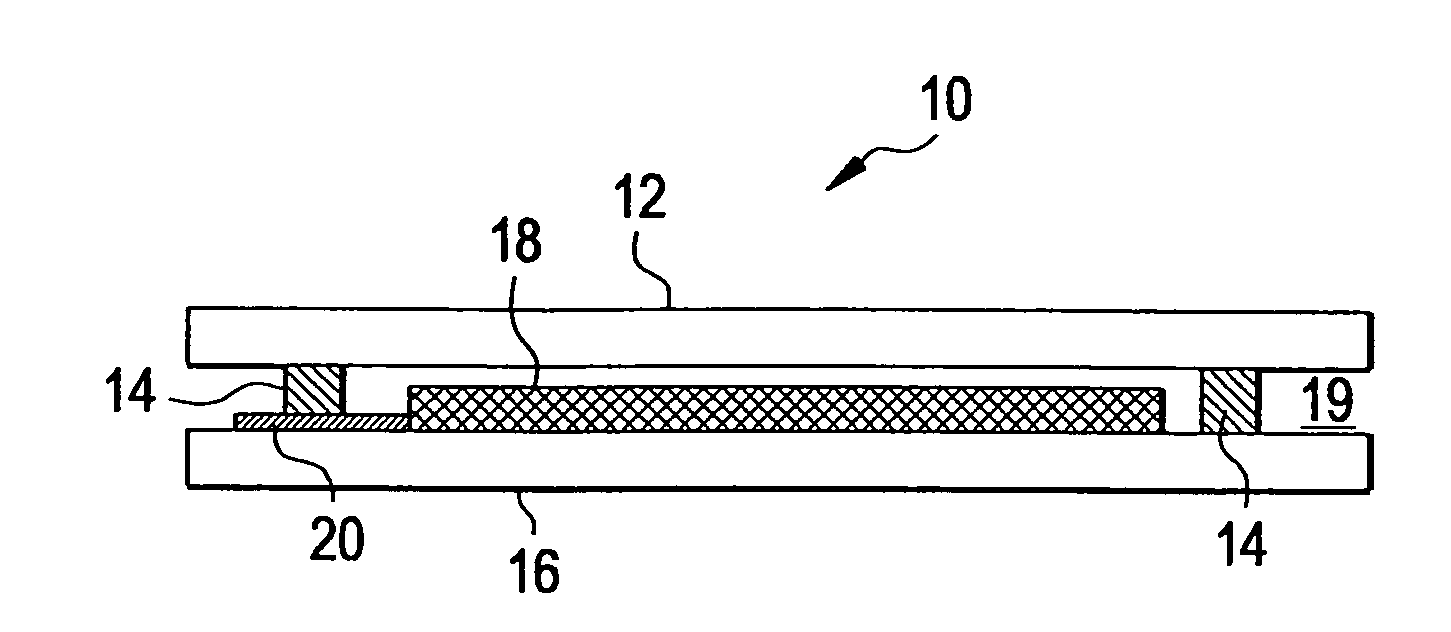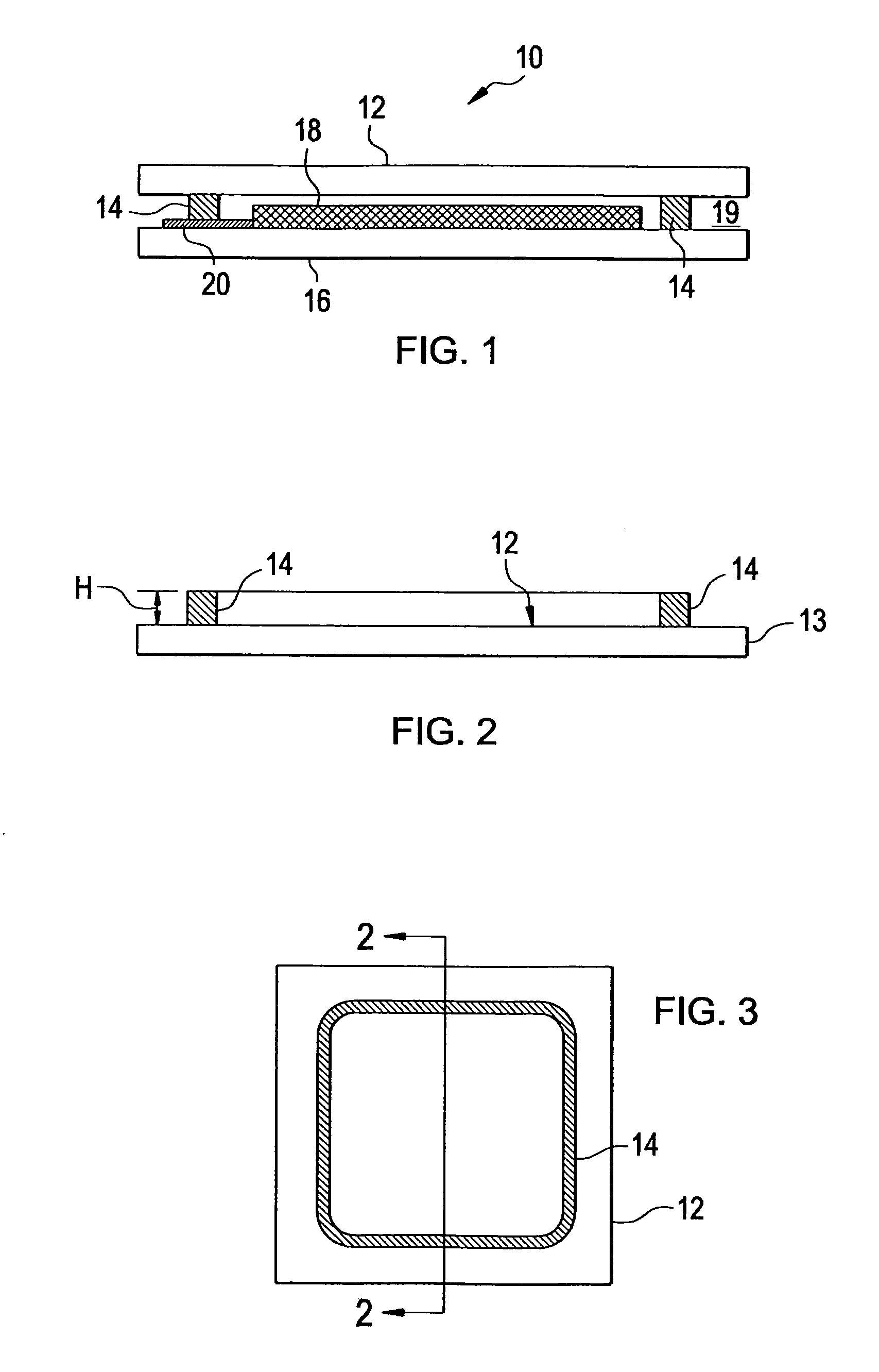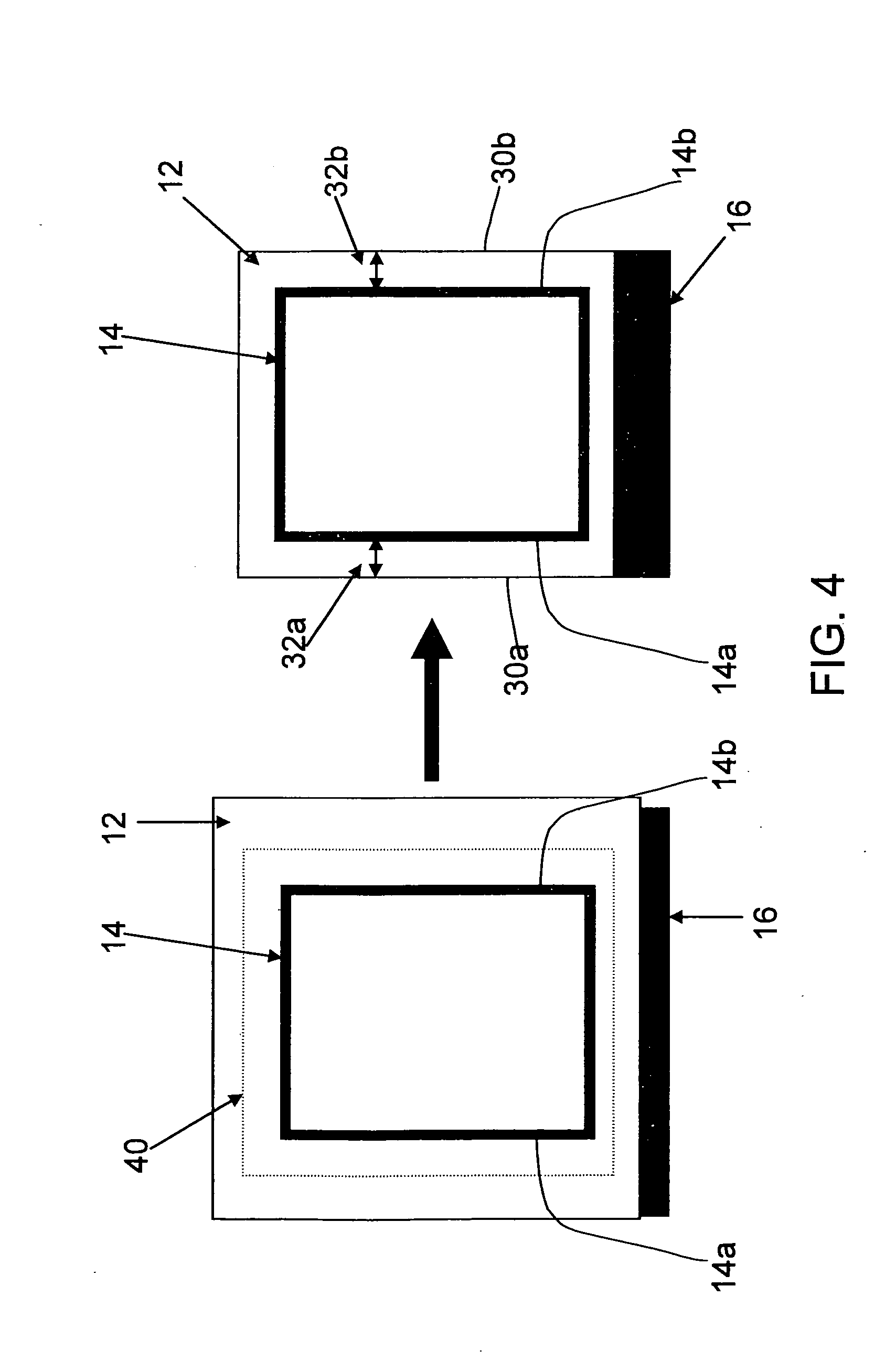Hermetically-sealed packages for electronic components having reduced unused areas
- Summary
- Abstract
- Description
- Claims
- Application Information
AI Technical Summary
Benefits of technology
Problems solved by technology
Method used
Image
Examples
Embodiment Construction
[0030]As discussed above, the present invention relates to the packaging of electronic components, e.g., temperature sensitive elements such as OLEDs, wherein the sealed and sized package has: (1) a high level of hermeticity and (2) a reduced unused area, specifically, a reduced outer unused area.
[0031]FIG. 1 is a schematic, cross-sectional, side view of a hermetically sealed OLED display device, generally designated by reference numeral 10, comprising a first substrate 12, a sintered frit pattern 14, a second substrate 16, at least one OLED element 18, and at least one electrode 20 in electrical contact with the OLED element. Typically, OLED element 18 is in electrical contact with an anode electrode and a cathode electrode. Electrode 20 in FIG. 1 is intended to represent either electrode. Although only a single OLED element is shown for simplicity, display device 10 may have many OLED elements disposed therein. The typical OLED element 18 includes one or more organic layers (not s...
PUM
 Login to view more
Login to view more Abstract
Description
Claims
Application Information
 Login to view more
Login to view more - R&D Engineer
- R&D Manager
- IP Professional
- Industry Leading Data Capabilities
- Powerful AI technology
- Patent DNA Extraction
Browse by: Latest US Patents, China's latest patents, Technical Efficacy Thesaurus, Application Domain, Technology Topic.
© 2024 PatSnap. All rights reserved.Legal|Privacy policy|Modern Slavery Act Transparency Statement|Sitemap



